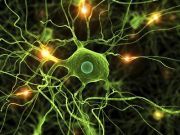Article
Molecular Mechanisms May Explain Transition from Acute Inflammatory Pain to Chronic Neuropathic Pain
Author(s):
Molecular changes seen in animal models of radiculopathy may help explain the transition from acute inflammatory pain to chronic neuropathic pain.

Molecular changes seen in animal models of radiculopathy may help explain the transition from acute inflammatory pain to chronic neuropathic pain, according to research presented at the 2014 American Association of Neurological Surgeons (AANS) Annual Scientific Meeting, held April 5-9, 2014, in San Francisco, CA.
For their research Mohammed Farid Shamji, MD, PhD, FAANS, FRCSC, Assistant Professor of Surgery at the University of Toronto, and colleagues studied 2 groups of mice: the experimental group received mid-thigh sciatic nerve dissections and a placement of nucleus pulposus (NP), while the control group received only exposure.
The mice were each evaluated at one, 3, and 5 weeks for mechanical and cold allodynia, thermal hyperalgesia, and gait stability. At each examination, the mice received either intraplantar capsaicin injection in a 0.1 mg dose or vehicle alone, and then underwent the same behavioral tests.
At 3 and w5 weeks, the mice with the NP implantation showed mechanical allodynia to subthreshold capsaicin compared to the controls. The researchers also observed heightened spinal cord dorsal horn and dorsal root ganglion transient receptor potential vanilloid 1 (TRPV1) expression in the NP group.
“This is the first study to find and demonstrate an animal model that shows the long-term nerve sensitization after having been exposed to intervertebral disk tissue,” Shamji told Pain Medicine News. “For the most common operation that neurosurgeons do, which is a lumbar diskectomy, there was previously no predictable investigational model to understand why some people improve and others do not.”
The scientists found that non-compression herniation sensitized the sciatic nerve distribution in the animal models of radiculopathy. They further concluded that TRPV1 activity might underlie the tipping point between inflammatory pain and chronic neuropathic pain, which could be used as a target for treatment.
“The goal of my research is to understand the molecular mechanisms transforming the nerve from mediator of pain because of extrinsic stimulus to a pain generator [that is itself] intrinsically injured, leading to pain in the absence of any other stimulus,” Shamji said. “The goal in the clinical realm, then, is to understand how neuropathic pain develops from otherwise reversible spinal disease and, at a more fundamental level, how we can treat it, either by rationally treating the symptoms of pain or by preventing or reversing some of those molecular changes.”



